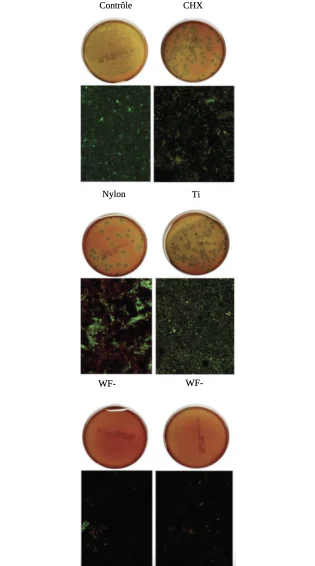Effect of Implant Cleaning on Surface Alterations and Titanium Dissolution
Effect of Implant Cleaning on Surface Alterations and Titanium Dissolution
Kotsakis G, Black R, Kum J, et al. J Periodontol 2020; 1–12. DOI: 10.1002/JPER.20-0186.
Study conducted at the University of Washington, Seattle, USA.
Objective
To determine the effects of mechanical treatments for peri-implantitis on titanium implant surfaces, and whether surface changes were associated with increased titanium dissolution and loss of cytocompatibility.
Methodology
This study used 200 micro-rough, acid-etched titanium (Ti) discs as a substrate for several species of human dental biofilm. Biofilm was obtained from a 56-year-old non-smoking male diagnosed with severe peri-implantitis and cultured anaerobically on 10 mm Ti discs for 48 hours.
Sterile saline served as the negative control and 0.12% chlorhexidine (CHX) as the positive control. Mechanical treatments included a nylon brush (NB) and titanium brush (TB) operated at 300 rpm with a surgical implant motor, or a Waterpik™ Water Flosser (WF) on low or high settings for 30 seconds.
Biofilm clearance on discs was evaluated using colony-forming units (CFU). Surface alterations were analysed by scanning electron microscopy (SEM), atomic force microscopy (AFM), and stereomicroscopic imaging. Corrosion resistance and titanium dissolution were measured via electrochemical cell modelling over 30 days. Cytocompatibility was assessed using a re-osseointegration model to evaluate osteoblast attachment and proliferation after treatment.
Results
Biofilm Removal: The WF groups achieved >90% biofilm removal compared to saline (p<0.01). The CHX group was least effective, while the TB and NB groups achieved only partial removal.
Surface Alterations: WF and NB treatments showed minimal surface alteration, comparable to the control. The Ti brush created the most pronounced surface changes, indicating abrasion.
Corrosion Resistance and Dissolution: WF treatments were the most stable, demonstrating superior corrosion resistance and minimal Ti dissolution.
Cytocompatibility: WF and NB groups maintained high live cell counts, comparable to the control. The Ti brush and CHX groups had the lowest live cell counts, indicating reduced compatibility.
Conclusion
The Waterpik™ Water Flosser was significantly more effective at removing biofilm than CHX, nylon brush, or titanium brush methods, while maintaining surface integrity and biocompatibility.
Antimicrobial effect assessment results: Biofilm elimination after 30 seconds of treatment
The Waterpik™ Water Flosser was significantly more effective at removing biofilm than CHX, nylon brush, or titanium brush methods, while maintaining surface integrity and biocompatibility.
Image courtesy of Georgios A. Kotsakis, DDS, MS.
